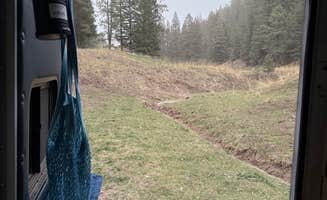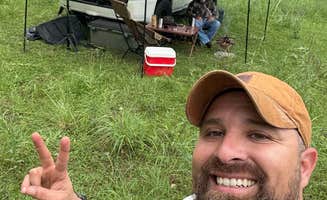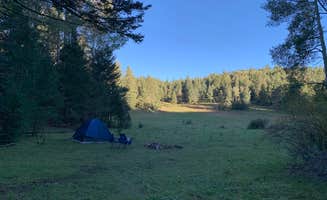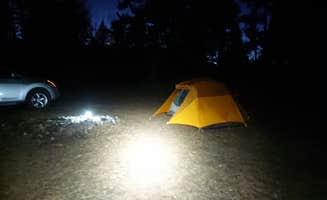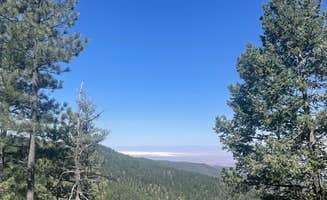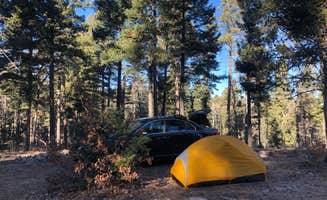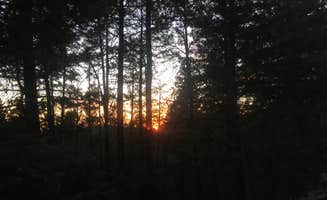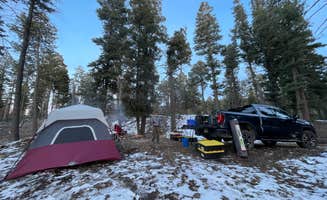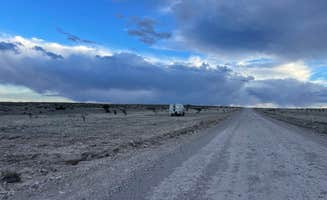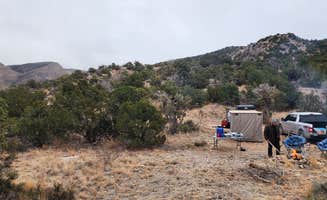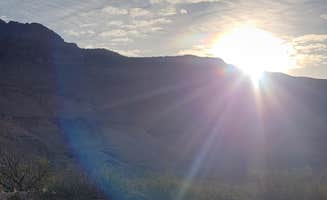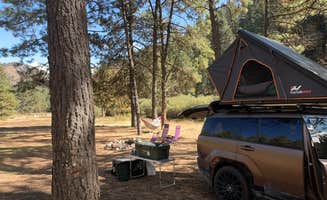Dispersed camping sites near Weed, New Mexico extend throughout Lincoln National Forest at elevations ranging from 7,500 to 9,400 feet, creating a cooler climate compared to surrounding desert areas. Summer daytime temperatures typically reach 75-85°F while nighttime temperatures can drop below 45°F even in July and August. The region's combination of high elevation pine forests and meadows attracts elk and other wildlife, making it popular for both camping and wildlife viewing.
What to do
Waterfall hiking: Bluff Springs Dispersed Camping offers access to a small waterfall that serves as a focal point for visitors. "Stunning views. Waterfall. No cell coverage," notes one camper, making it ideal for those wanting to disconnect. The area includes hiking trails branching from the springs area through forested terrain.
Wildlife viewing: The high elevation meadows are excellent for spotting elk, particularly in fall. "We saw more elk than we could count! Just glowing eyes everywhere and all in the road," reports a camper at Forest Road 568 Dispersed Camping. Early morning and dusk offer the best viewing opportunities, with bugling elk commonly heard during the fall rutting season.
Mountain biking: Several forest roads provide access to mountain biking trails. However, be aware that some trails are shared with OHVs. "Nice trail access from the campsite that is OHV friendly, so not super great for running or biking," warns one Bluff Springs camper, suggesting riders seek out dedicated biking trails in the broader forest area.
What campers like
Cool mountain temperatures: The high elevation provides relief from desert heat. At Dog Canyon, campers appreciate "Beautiful New Mexico Mountain Views" while staying cool in hot months. The 2,000+ foot elevation change from nearby towns creates significantly different camping conditions.
Forest seclusion: Many sites offer significant privacy despite proximity to roads. "We got a nice little private spot under a huge tree. There was lots of really nice people staying at the sites at the entrance, but if you go further you can find some privacy," notes one Forest Road 568 camper. Sites extending up to 200 feet back into the woods provide quiet surroundings.
Stargazing opportunities: The remote location minimizes light pollution. Bailey Canyon provides "a good patch of dirt and trees up in the mountain with a good clearing" ideal for night sky viewing. Clear mountain air enhances visibility of celestial features, particularly during new moon phases.
What you should know
Road access challenges: Many dispersed sites require navigating dirt roads that deteriorate during wet weather. At Lincoln National Park Forest Road 634, visitors advise: "Follow sunspot highway to mile marker number 5, the forest road is right there. Once you enter take a left down the slope." High clearance vehicles are recommended for most dispersed sites.
Increasing popularity: Free camping areas are becoming more crowded, particularly in summer. "Been camping here several times a year and it just keeps getting busier and busier. Need to find a new place!" warns a Bluff Springs visitor. Weekdays offer better chances for securing preferred sites.
Limited turnaround space: Large RVs face challenges on forest roads. "We went to the end of the road to find out that there was no way to turn our 29 ft trailer. We had to go in reverse about 1/4 mile to find a place to turn around," cautions a Forest Rd 568 camper. Scout ahead before taking large vehicles down unfamiliar roads.
Tips for camping with families
Creek access for children: Sites near water features provide natural entertainment. At Bluff Springs, one family noted: "We found a pretty big spot and set up camp. With one camper, two tents, two jeeps, two dogs, six kiddos and 10 adults it was a chore to get everything out and set up but worth every minute to enjoy the next three days worry and technology free. The spot was amazing right next to the little creek."
Wildlife education opportunities: The abundant wildlife creates learning experiences. Alamo Peak Rd offers sightings of "Elk, hummingbirds, all tucked away in aspen grove. This is a special spot." Bring binoculars and wildlife identification guides to enhance the experience.
Weather preparation: Mountain temperatures fluctuate dramatically. "Over 9,400' and it got cold at night. Saw one elk and heard more bugling. Plenty of wood to make a fire," reports a camper from Forest Service Road 64. Pack layers and cold-weather sleeping gear even in summer months.
Tips from RVers
Size limitations: Most free camping near Weed, New Mexico accommodates smaller RVs better than large ones. "We have a 30 foot motor home and were so glad to find a dispersed spot in the mountains we could fit!" shares an Alamo Peak Rd camper, highlighting the scarcity of suitable spaces for larger vehicles.
Level site challenges: Finding flat parking requires patience. "Rocky unlevel sites" are mentioned by one Forest Rd 568 camper, who also notes they were "Able to get our 31' class C with no issues other than unevenness." Bring leveling blocks and be prepared to search for suitable parking spots.
Access road reconnaissance: Prior scouting prevents complications. "It's a Forest road so check it out before pulling your trailer up it. Was gated and locked about 1.5 miles in no room to turn a rig around there," advises an RVer. When possible, unhitch and scout roads before bringing in trailers or larger motorhomes.


